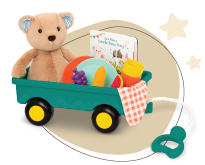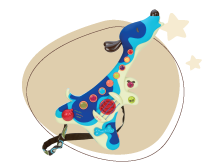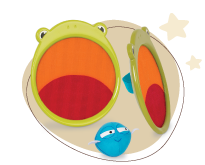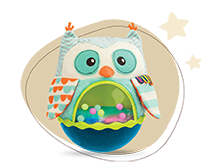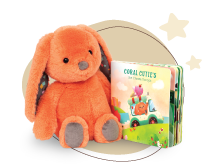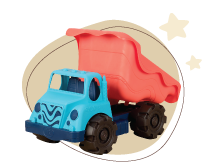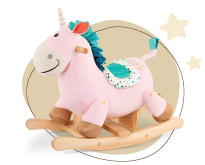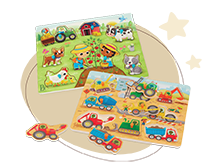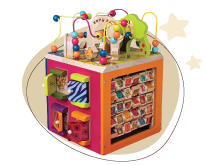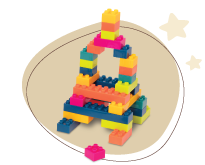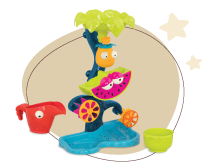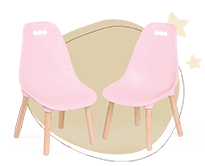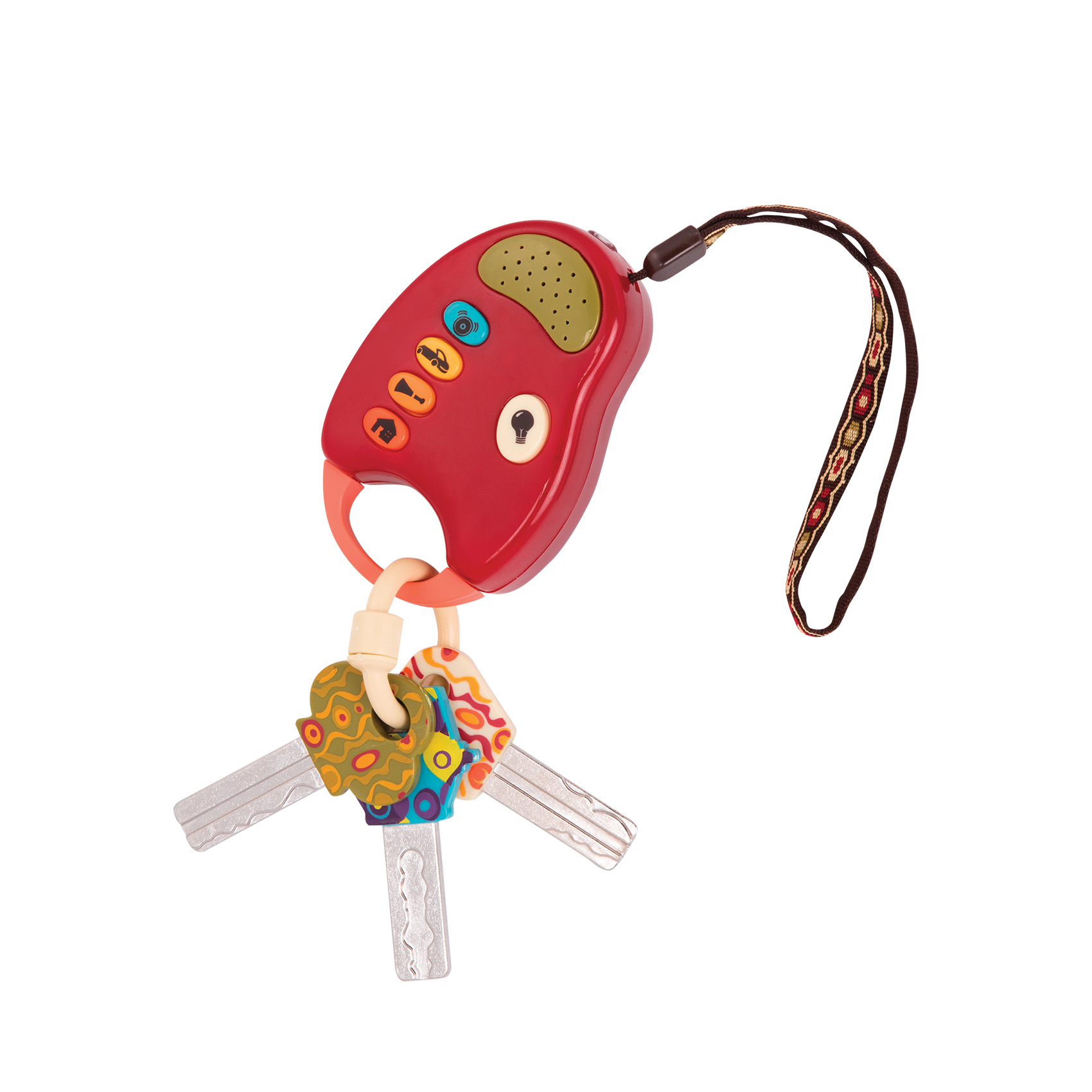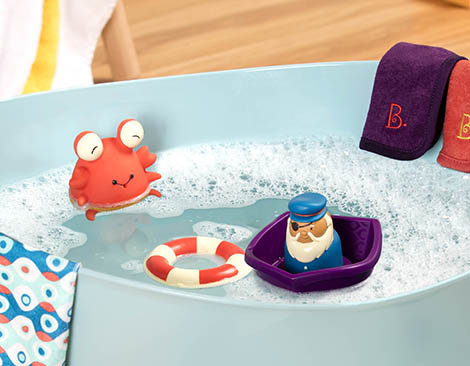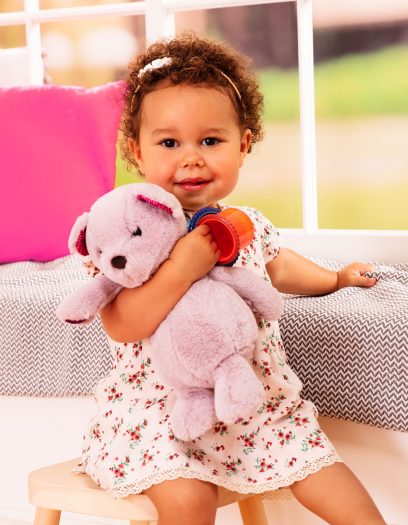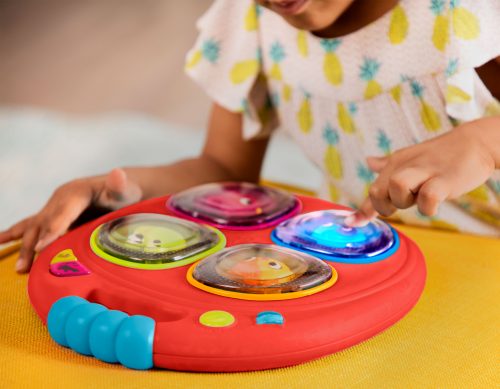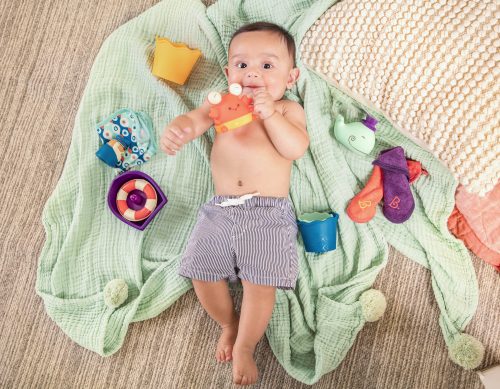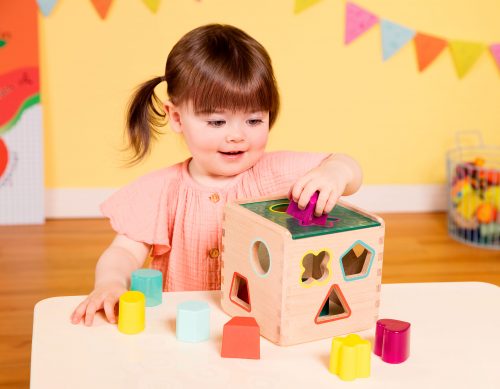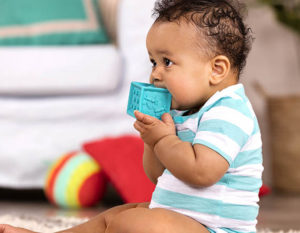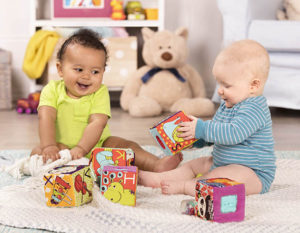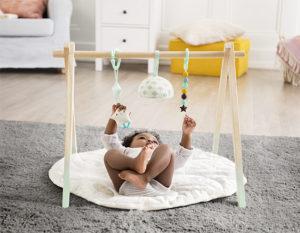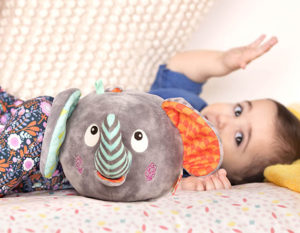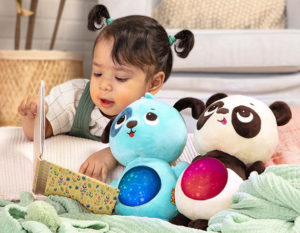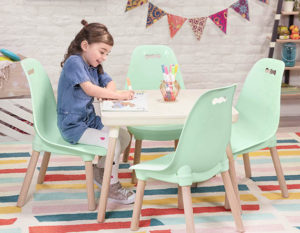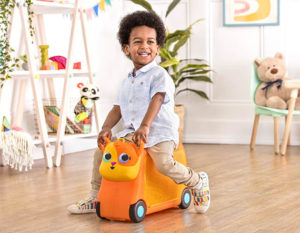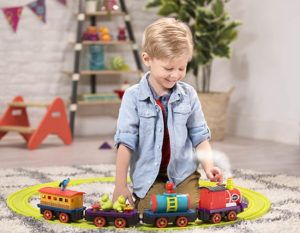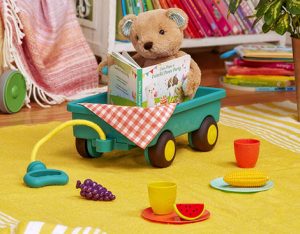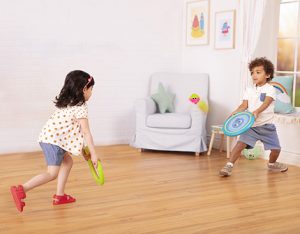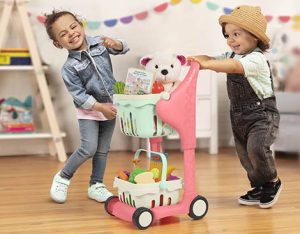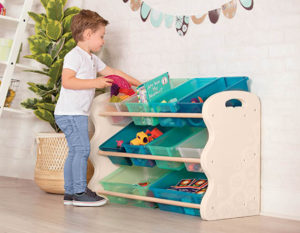Every parent faces this question when their little one starts reaching and grabbing things: Is that clean? It’s understandable – we want the best for our kiddos, and that means keeping them healthy and happy!
So what can you do about it? Cleaners and their residues are often as spooky as the germs they’re meant to wipe out. You want something that will be thorough, but not too harsh. Something that will clean surfaces, but be safe. There are lots of solutions out there, and it’s often hard to know which method is the best – but we’ve got you covered!
Here’s a selection of ways that you can clean and disinfect your baby toys:
Basic Bleach Solution
We know that bleach sounds a lil’ scary, but is it really dangerous? The answer is: not if you use it right and only use it on non-porous, plastic toys!
For starters, you don’t want to use straight bleach – that’s a bit too strong for what you’re trying to do. You just want to create a mild solution that will get rid of the germs, viruses, and molds that are overstaying their welcome on toys.
The trick is to create a very mild solution: one gallon of warm, clear water, and one tablespoon of bleach. That’s all the bleach you’re going to need! But before you get to the bleach, simply start with soap and water. Washing them with your average dish soap in the sink is all you need to do to scrub these little toys till they’re free of dirt. Then rinse them off and get ready for the next step!
This is when you bring out the bleach solution. You can dip the toys in the solution and wipe them off with a clean cloth (remember bleach will still zap colors, so make sure it’s not a special washcloth!) and then leave them out to dry. One of the beauties of washing with bleach is that it doesn’t leave residue, and allowing the toys to air dry will make all of the bleach disappear. (Just never let ammonia and bleach mix!)
Laundering Plush Toys
Most plush toys are machine washable and will go through a load in the washing machine and dryer just fine! It’s probably a good idea to launder them at least once a week – especially if they’re your baby’s favorite toy. As children get a little older, it’s likely that their plush toys will be taken outside, or even played with in the bath, but it’s nothing a washing machine can’t handle!
Just be sure to pause before popping their favorite teddy bear into the wash along with a regular load of clothes. All toys have labels on them and they should be checked to make sure that they don’t have special cleaning instructions. Once all is good, place the plush toys into a pillow case for protection, tie a knot at the top, select a gentle cycle (if possible), and you’re good to wash and dry!
(REMEMBER: If a stuffed animal has any batteries, electronics, or metal parts, these can all be damaged by the wash!)
Washing Plush Toys that Can’t Go in the Wash
For a plush bunny that sings or a fabric doll that wiggles, laundering would not be the way to go! Instead, we suggest a hand wash. Get a washcloth wet in warm, soapy water (this works best with laundry soap, as it’s made for cloth), and rub the toy all over with the cloth. Then rinse out that cloth in clean, clear water, and wring it out well.
Allow the toy to air dry or use a hair dryer afterwards. You can also place it in the sun if you like, though heating it may cause a little stiffness in the fur.
Washing Electronic Toys
The process for cleaning electronic toys is quite similar to plush toys that can’t be part of the laundry basket. These are toys you wouldn’t want to submerge, or even get them very wet at all, but you need to get them wet enough to remove the dirt!
Wet a wash cloth with warm, soapy water (such as dish soap) then wring out the cloth fully to make sure that it doesn’t even drip. Scrub all of the parts that look dirty, especially around buttons and places where tiny hands rest. (Make sure to get into the crevices!) Then simply allow it to air dry.
To fully disinfect, use a disinfecting wipe or a wipe of alcohol (again, very sparingly so it doesn’t drip inside).
How to Wash Rubber or Silicone Toys
These toys can put parents in a bit of a pickle – they’re not as easy to wash with the plastic toys, but they don’t fit with the plushies either. They also can’t be boiled, as that could ruin them.
The key here is to make a different solution! Not bleach this time, but a 1–to–1 solution of vinegar and water. Wet a washcloth in the solution, then rinse and dry off the toys. Air drying works great for this, too!
How to Clean Bath Toys
Bath toys – both sealed and not sealed – still need to be cleaned! The good news is that you don’t have to do it every day, and you definitely don’t have to use harsh chemicals. You can get good results from the simplest of natural ingredients!
Add ½ cup of white vinegar to a gallon of warm water in a bucket. Soak the toys for about ten minutes in this solution, pull them out, and rub them gently with a sponge (if there are crevices, you can use an old toothbrush). Then simply let them air dry. The best news? You only need to do this once a month! (But you can do it more often if you see dirt beginning to build up on the toy.)
How to Clean Wooden Toys
Vinegar comes to the rescue here, as well! Wood is porous, so it’s definitely not something that you want to soak as that could lead to splitting, chipping, and warping. Getting wood wet could also lead to mold growth. But dirt can be found in little grooves, so you want to get it clean!
We suggest using the same 1–to–1 vinegar solution you created for the rubber and silicone toys – just wipe wooden toys down with a damp rag and let it air dry. If you feel you need more attention in the grooves, grab a brush for them.
There are many ways to make sure little ones stay happy and healthy, and we hope that these toy-tastic tips and tricks will help you make that happen!
